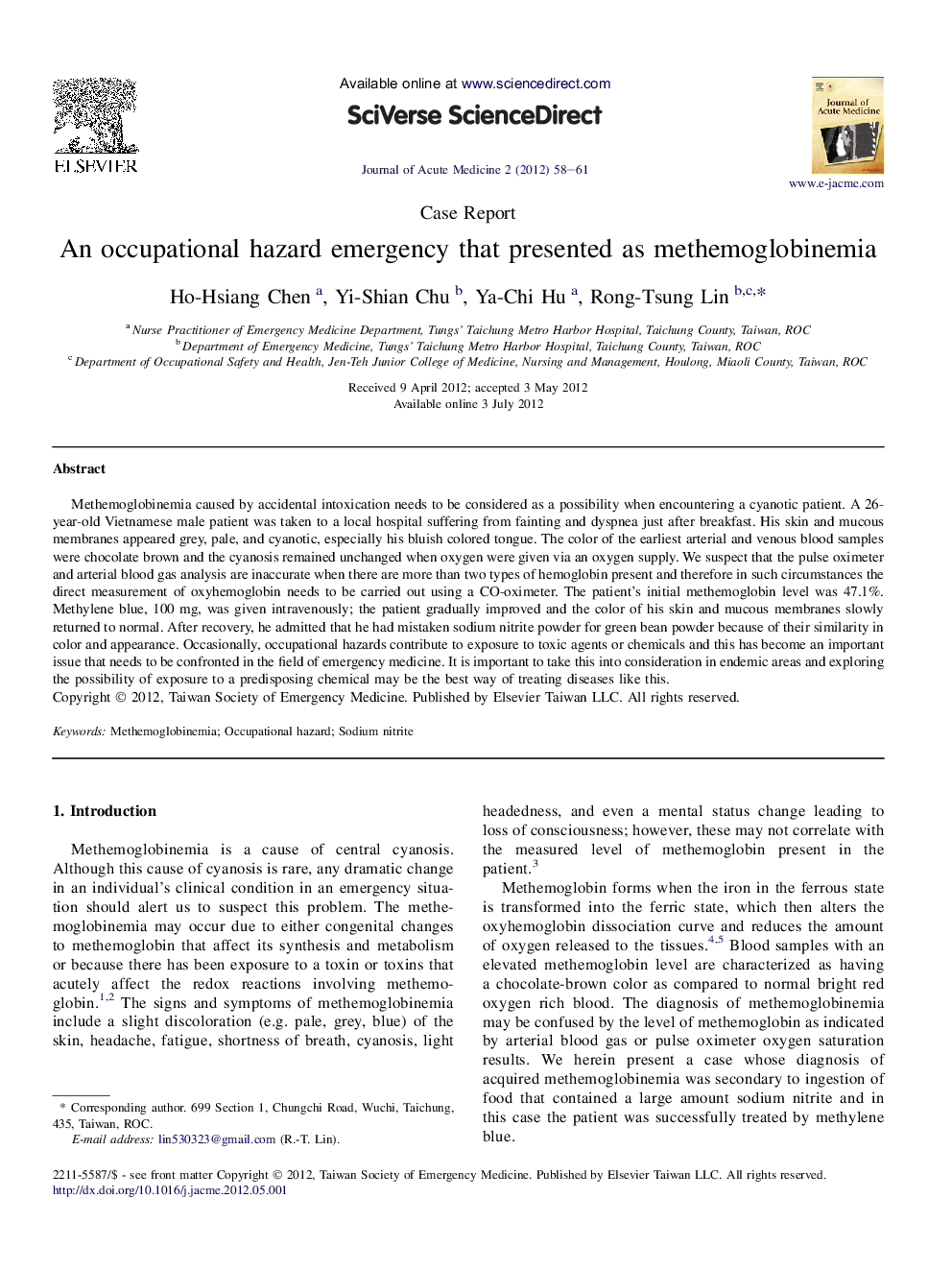| Article ID | Journal | Published Year | Pages | File Type |
|---|---|---|---|---|
| 3244998 | Journal of Acute Medicine | 2012 | 4 Pages |
Methemoglobinemia caused by accidental intoxication needs to be considered as a possibility when encountering a cyanotic patient. A 26-year-old Vietnamese male patient was taken to a local hospital suffering from fainting and dyspnea just after breakfast. His skin and mucous membranes appeared grey, pale, and cyanotic, especially his bluish colored tongue. The color of the earliest arterial and venous blood samples were chocolate brown and the cyanosis remained unchanged when oxygen were given via an oxygen supply. We suspect that the pulse oximeter and arterial blood gas analysis are inaccurate when there are more than two types of hemoglobin present and therefore in such circumstances the direct measurement of oxyhemoglobin needs to be carried out using a CO-oximeter. The patient's initial methemoglobin level was 47.1%. Methylene blue, 100 mg, was given intravenously; the patient gradually improved and the color of his skin and mucous membranes slowly returned to normal. After recovery, he admitted that he had mistaken sodium nitrite powder for green bean powder because of their similarity in color and appearance. Occasionally, occupational hazards contribute to exposure to toxic agents or chemicals and this has become an important issue that needs to be confronted in the field of emergency medicine. It is important to take this into consideration in endemic areas and exploring the possibility of exposure to a predisposing chemical may be the best way of treating diseases like this.
